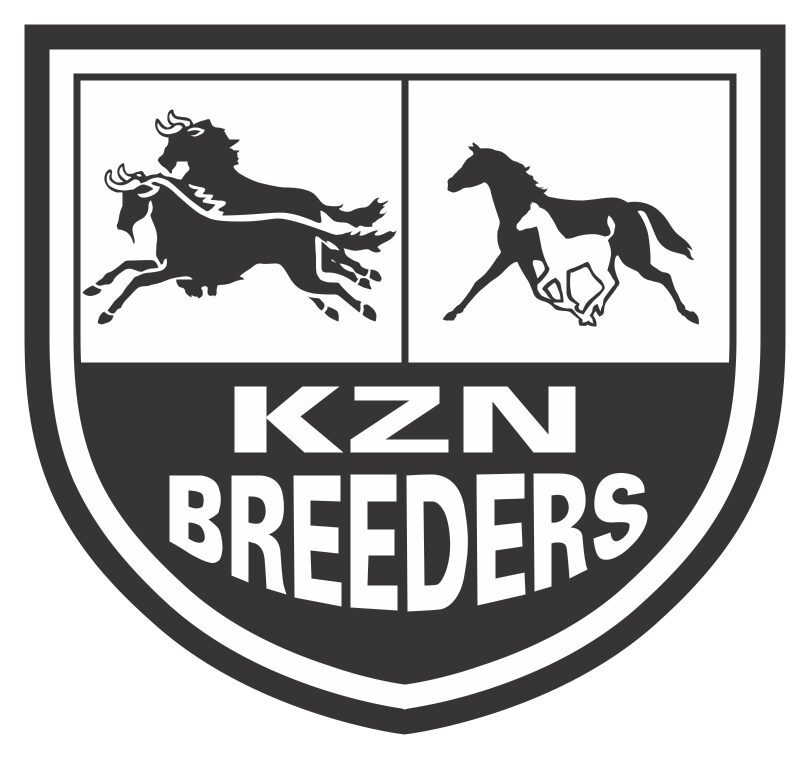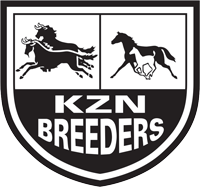
Stud for R1.350 million at the 2011
National Yearling Sales
Getting involved in owning a racehorse is easier then you think!
Owning a racehorse can be one of the most exhilarating, exciting and adrenaline-filled experiences you will ever have. The thoroughbred industry welcomes new owners, and it is no longer something that seems to be “out of reach.”
Buying or breeding your own horse, keeping an eye on his progress, and finally watching him thundering down the final straight in the lead can be a very rewarding experience.
Investing in thoroughbred racing may offer exciting business opportunities but it is important to recognise that it is a speculative venture. Before you get involved, you need to accept that horses are not machines but athletes, and there is no “guarantee” that your investment will “strike gold”. The risks are high but the rewards both financial and emotional can be substantial. The secret is to find your own comfort range. It is important to begin by answering the following questions.
- What level of financial commitment do I want to allocate to my racing interests?
Determine the total amount you are prepared to invest and then develop a budget which will be allocated to the purchase of your horse/s and forecast monthly expenses. This is usually a good guide in determining the best form of ownership for you.
- Would you prefer to invest as an individual or in a group?
Your level of investment should serve as a guide in determining the best form of ownership for you, but you may be the type of person who prefers to take control, assume all the risks and receive all the rewards. Or, do you prefer to spread your risks and share the rewards? It does make it all the more enjoyable if you involve your friends.
- What time period is involved?
In selecting a horse you need to consider whether you are looking for a quick return offered by a horse already in training or are prepared to wait a little longer for a more personal option which allows you to be a part of the horse’s training from the very beginning?
Ownership Options:
You have two ownership options: owning or leasing. Owning entails purchasing a horse from a bloodstock auction, or privately from a trainer, breeder or stud farm while leasing gives you certain rights to the horse for a certain time period.
Owning
- Sole ownership means that you are responsible for all the costs of owning the racehorse (purchase price, training fees, veterinary bills etc.). This also ensures that you will be the main beneficiary of any stakes earned on races.
- Co-ownership means sharing the costs and benefits, the thrill of ownership and the excitement of race days makes this option a popular one for first-time owners. It also allows owners to spread their investment and enjoy an interest in more than one horse.
- Syndicates consist of between five and 20 people. It’s a low cost option and allows owners to invest in quite a number of horses, increasing the chances of having an interest in a winner.
- Companies and close corporations can also register with The National Horseracing Authority as owners of racehorses.Leasing
- Leasing a racehorse involves ownership of a racehorse for a set period of time. The horse owner, usually the breeder, leases the horse to an owner or syndicate. The terms of the lease may vary, but is often for a fixed period e.g. three years.Costs Involved in maintaining a racehorse:
- The purchase price of the horse;
- Monthly spelling and training fees;
- The running costs of keeping the horse in training and racing;
- Farrier fees (which are monthly);
- Routine Veterinary Care as required – vaccinations, deworming etc;
- Insurance -optional but recommended;
- Race entry fees;
- Transport;
- Jockey Fees; and
- Ownership Registration FeesCosts can and do vary according to the racing schedule and well-being of your horse. It is recommend that you enter into a formal agreement with your trainer, which clearly sets out what the costs are and what is included in the monthly charge.

Choosing an Agent or Trainer
Thoroughbred horseracing is a team sport. If you’re new to the industry, don’t try and buy a horse without looking for assistance. In addition to a good horse, the team needs a good trainer. It would be wise to exercise as much care in selecting your trainer and/or bloodstock agent as you would in selecting a horse. Consultants can come in various forms, from trainer, bloodstock agent, pedigree advisor, veterinarian to an experienced owner.
Selecting a Trainer
It is a good idea to select your trainer before purchasing your thoroughbred. This is a very important consideration, as he or she can give invaluable advice in the selection and purchasing process. There are training centres around all the major cities in South Africa. In choosing your trainer it is advisable to select one who is based not too far from your home. You can study the trainers’ performance chart and select any of the trainers but there are other factors to consider.
Some trainers prefer to run small, quality yards with a minimum band of owners. Although they may not be log-leaders, their percentage of winners to runners, like any other yard, should be used as a yardstick to measure how they are performing in the industry.
The owner/trainer relationship is probably the most important in racing. So take your time and select the individual that suits your needs and personality.
- It is important that amongst other details you establish the following:
- How often should you reasonably expect the trainer to communicate with you?
- When do you wish to be consulted?
- What are the arrangements for visiting the yard?
- Would you like the trainer to attend sales and make purchases on your behalf?
Registration with the National Horseracing Authority
Registering your racing colours:
Every owner has to be registered with the National Horseracing Authority of South Africa. Registration forms can be obtained from either the Racing Association or directly from the National Horseracing Authority.
Racing colours:
Each owner, on the acceptance of his/her application, can visit the NHRA to select his/her individual racing colours. These will be the colours/silks worn by the jockey who will be riding your horse in the race. A selection of available colours will be shown to you but failing you finding a suitable choice, you may design your own racing colours within certain restrictions. These will then be approved by the National Horseracing AuthorityGetting your own “Colours is really not all that difficult.
There are lots of different options to suit your own needs.
Here’s how:
The term “Colours” really refers to the permission that you get from The National Horseracing Authority to race a horse. You make an application to register as a racehorse owner and, if the application if successful, you are granted your “Colours”. This means that you can design or choose the silk shirt worn by the jockey whenever he rides your horse. The silks are unique to each owner so the owner of every horse in a race can be identified by the “Colours” that the Jockey wears.
It is against the Rules to own a horse, or a share in a horse, if you don’t have “Colours”. But, there is no reason not to have your own “Colours”. If you have your own “Colours” then you will benefit from the protection offered by the rules. The application process is very easy and you can get an answer within a few days.
Individual Owner
You can apply to have your own personal “Colours”. These “Colours” will belong to you alone and the Jockey will wear them whenever he rides your horse. If you choose to own all of your own horses outright then you can make all of your choices regarding the horse without having to consult anybody else. If your horse wins a race then the glory (and the prize money) is all yours, you don’t have to share it with anyone else! Another advantage is that you can still race in partnership with others (see Partnerships).The disadvantage of course, is that you have to pay all expenses for the horse yourself.
Partnerships
There are two kinds of partnerships.
In the first kind existing Colour Holders can get together and race a horse in the names of all of the partners. In this case the Jockey wears the “Colours” of one of the partners.
The second kind of partnership is when a number of people (not more than 20) get together and apply for a set of “Colours” for the whole partnership. The partnership, as a whole group, then has its own “Colours”. The “Colours” do not belong to any of the individual partners.
In any partnership the costs of keeping the horse are shared amongst the partners. Some partners may have a greater share than others. The names of all partners appear in the race card and the official records.
Partnerships are a lot of fun as the excitement of owning a racehorse can be shared by a group of people. The cost is also much less than owning a horse by yourself, as each partner pays a share.
Partnerships can be made up of individuals, other partnerships, syndicates, close corporations, companies or trusts.
Syndicates
A syndicate is similar to the second type of partnership mentioned above. The main difference being that the identity of the members, except for the nominee, remains anonymous. The group decides on a Syndicate name and it is that name that appears in the race card and official publications. A Syndicate must however decide on a person to represent it and this person will be the “Nominee”. The nominee’s name will appear in the race card and official publications.
Syndicates must consist of a group of betweeb five and 20 people. A syndicate can also be made up of other partnerships, close corporations, companies or trusts.
Close Corporations
 A properly registered Close Corporation can apply for Colours to race a horse. The CC must also have a person to represent it as the nominee. Close Corporations may not have more than 10 persons.
A properly registered Close Corporation can apply for Colours to race a horse. The CC must also have a person to represent it as the nominee. Close Corporations may not have more than 10 persons.
Company
A properly registered Company can also apply for Colours.
Trust
Colours can also be granted to a Trust.
Making up your racing silks
There are a number of persons who make up racing silks. For contact details please contact your closest racing association.
Getting your horse registered
Once application for ownership has been accepted and you have purchased your racehorse, this racehorse has to be registered in either the individual, partnership or syndicate name. On the successful purchase of your horse, the registration papers will be forwarded to you by the relevant sales company. You have to lodge the change of ownership forms with the National Horseracing Authority.

